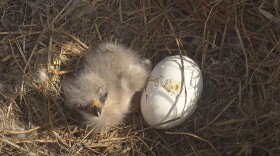There is a lot to unpack in the Army Corps' new plan for managing Lake Okeechobee’s water level, including details on when the floodgates will be opened to lower the lake level, how much and where that water will be sent, and how much less polluted it might be.
The Lake Okeechobee System Operating Manual, called LOSOM by many, is as much a document with parameters and rules for water releases as it is a philosophy of fairly sharing in the benefits of the improvements to the Everglades.
Lake Okeechobee has been polluted with nitrogen and phosphorus from Big Sugar operations along its shores for decades, as well as runoff containing that and a lot more from the metropolitan Orlando area via the Kissimmee River.
Should everything go according to the new plan, there will be few releases of the polluted lake water east into the St. Lucie River, which empties into the already-polluted Indian River Lagoon near Stuart, and smaller, beneficial amounts of water released west into the Caloosahatchee River instead of sustained surges of billions of gallons of water a day for months at a time.
When filtering reservoirs are completed to the south of the lake, clean and clear water will flow down toward Florida Bay at the southern tip of the peninsula, restoring at least some of the natural flow of the River of Grass.
“For the first time the lake will be operated equitably,” said Steve Davis, chief science officer for the Everglades Foundation. “All interests are considered including the high-volume discharges to the estuaries, which we want to reduce as much as possible. We also want to send more water south to the Everglades in addition to, of course, meeting water supply needs around the Lake Okeechobee service area."

The manual is five years late. The catalyst for its debut now was the strengthening of 143 miles of the Herbert Hoover Dike encircling the lake, completed last year after two decades and nearly $2 billion.
A stronger dike can more confidently be relied on to hold more water, which allows for many of the other changes in the plans, including leaving water deep enough for sugar growers to use when needed.
Davis said the takeaway is that lots of the people whose interests have been negatively affected by the way the water has been released in the past should be happier -- even if everyone didn’t get everything they wanted out of the revised plans for releases of water from the Big Lake.
“This plan aims to do all of what we feel is both equitable and aligned with the goals and objectives of Everglades restoration,” Davis said. “It’s really a win-win-win around the lake in terms of this operational schedule, and we look forward to seeing it implemented.”
The new guidelines for the man-made water cycle in Lake Okeechobee also focus on maintaining its well-earned reputation as one of the best bass fishing lakes in the country by enhancing the fish and wildlife population and the navigation needs of boaters.
“The biggest difference between LOSOM and the previous water control plan is looking at how we can use the water to have benefits for all parts of the system,” said Tim Gysan, a senior project manager for the Army Corps of Engineers who led the team that developed LOSOM. “Not be focused on constraints before the rehabilitation of the Herbert Hoover Dike.”

The new plan to manage the water flow from Lake Okeechobee throughout the Everglades is making its final rounds among various higher-ups before expected approval in the fall. Its guidelines will be implemented as the Everglades restoration allows.
“Now that that (dike) repair has been completed, we're free to look at what's the most beneficial way to operate the lake,” Gysan said. “Whether it's folks who need the water or folks who don't need the water such as the St. Lucie Estuary, it allows us to really look at conditions and make smart decisions as to where that water should go.”
Sign up for WGCU's monthly environmental newsletter, the Green Flash, today.
WGCU is your trusted source for news and information in Southwest Florida. We are a nonprofit public service, and your support is more critical than ever. Keep public media strong and donate now. Thank you.









